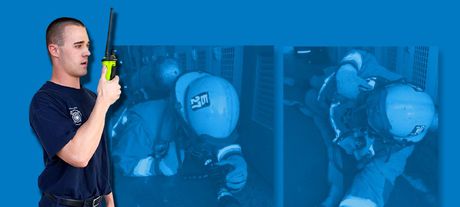US FEMA issues fire radio guide

The US Fire Administration (which comes under the umbrella of the Federal Emergency Management Agency, FEMA) has released a 109-page ‘Voice Radio Communications Guide for the Fire Service’ in PDF format.
The guide covers everything from basic radiocommunications theory to working with the upcoming FirstNet broadband network.
According to the guide, “The fire service is a small part of the public safety communications market and an even smaller part of the overall communications market. This has resulted in one-size-fits-all public safety radios and systems that do not always meet the needs of the fire service as a whole or those of a specific department. When you consider the extreme operating environment and the protective clothing, the fire service is unique among public safety and other municipal communications users.”
Some of the special challenges faced by firefighters include:
- Communications pace — communications on the fireground are fast-paced and may be chaotic.
- Work position — firefighters are often on the floor, crawling, which is not an optimal position for radio transmissions.
- Visibility challenges — heavy smoke and dark situations require users to be intimately familiar with the equipment.
- Self-contained breathing apparatus — voice ports on facepieces are difficult to communicate through, and there are restricted fields of vision.
- High temperatures and high humidity.
- Difficulty communicate from and hearing in a high-noise environment.
- Gloves and other personal protective equipment restrict vision, hearing and the manual dexterity required to operate radio controls.
- Buildings vary greatly in construction and complexity. All buildings to some degree resist penetration of radio waves. The RF resistance varies on construction type, size and layout.
The guide can be downloaded from the FEMA website.
Why P25 technology remains a good fit for public safety communications
Digital LMR technology ensures police officers, firefighters and emergency management teams can...
From past to present: leveraging satellite data for better disaster resilience
Whether monitoring flood-prone regions or assessing wildfire-prone landscapes, historical...
Lancashire Police adds in-car video to full vehicle fleet
Motorola Solutions' M500 in-car video solution observes a vehicle's environment from...





